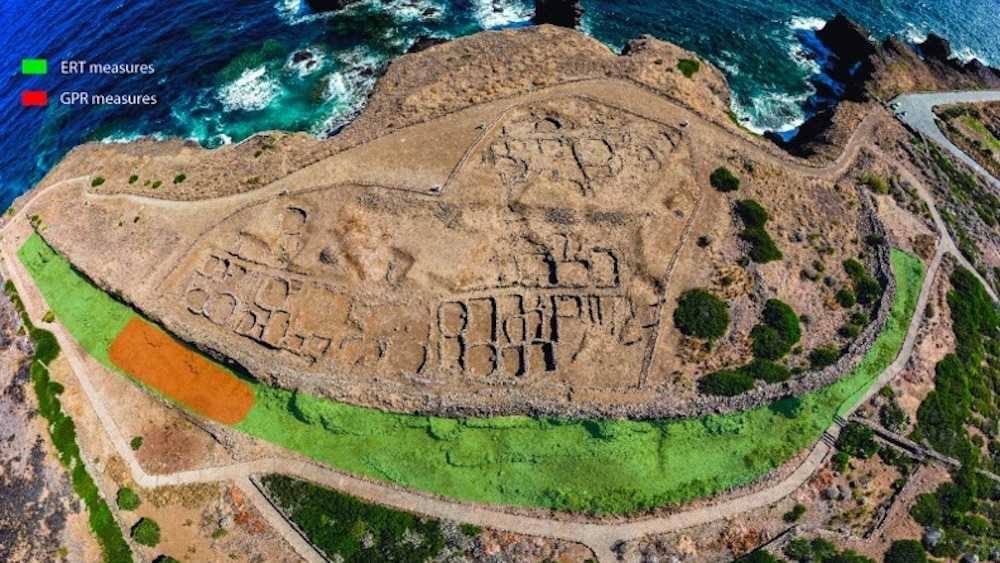
Researchers have discovered a hidden fortification system buried beneath a Bronze Age village in Italy.
Known as Villaggio dei Faraglioni, the settlement is located on Ustica, a small island north of Sicily. It has an "orderly urban plan" consisting of huts and narrow roadways built on the island's northern edge, according to a translated statement from Italy's National Institute of Geophysics and Volcanology (INGV).
Using instruments such as ground penetrating radar and electrical tomography (imaging below the surface), a team of archaeologists and geologists found the remnants of the buried wall, according to a study published in the January issue of the Journal of Applied Geophysics.
Related: Bronze Age 'infinity pool' hosted supernatural water rituals, archaeologists say
The arc-shaped stone fortification system, which the researchers described as a "mighty wall," is 820 feet (250 meters) long and 13 to 16 feet (4 to 5 m) tall, according to the statement.
Although the village site has been excavated numerous times since the 1970s, this is the first time researchers have spotted the hidden fortifications.

"Thanks to [the instruments], it was possible to locate accurately and in a totally non-invasive way the deep foundations of the [structure] as long as the wall, which performed the functions of the first defensive barrier," Vincenzo Sapia, an applied geophysicist with the INGV, said in the statement.
The fortified village remained active between 1400 and 1200 B.C., and researchers consider it "one of the best preserved Mediterranean settlements of its time," according to the statement.
"Our discovery opens a new window on the understanding of this ancient village, suggesting a defensive complexity that goes beyond expectations," Franco Foresta Martin, director of the Earth Science Museum Laboratory of Ustica, which is associated with the INGV, said in the statement. "Geophysical technology allows us … to reveal hidden layers of history, paving the way for further investigations without the invasive use of excavations."







